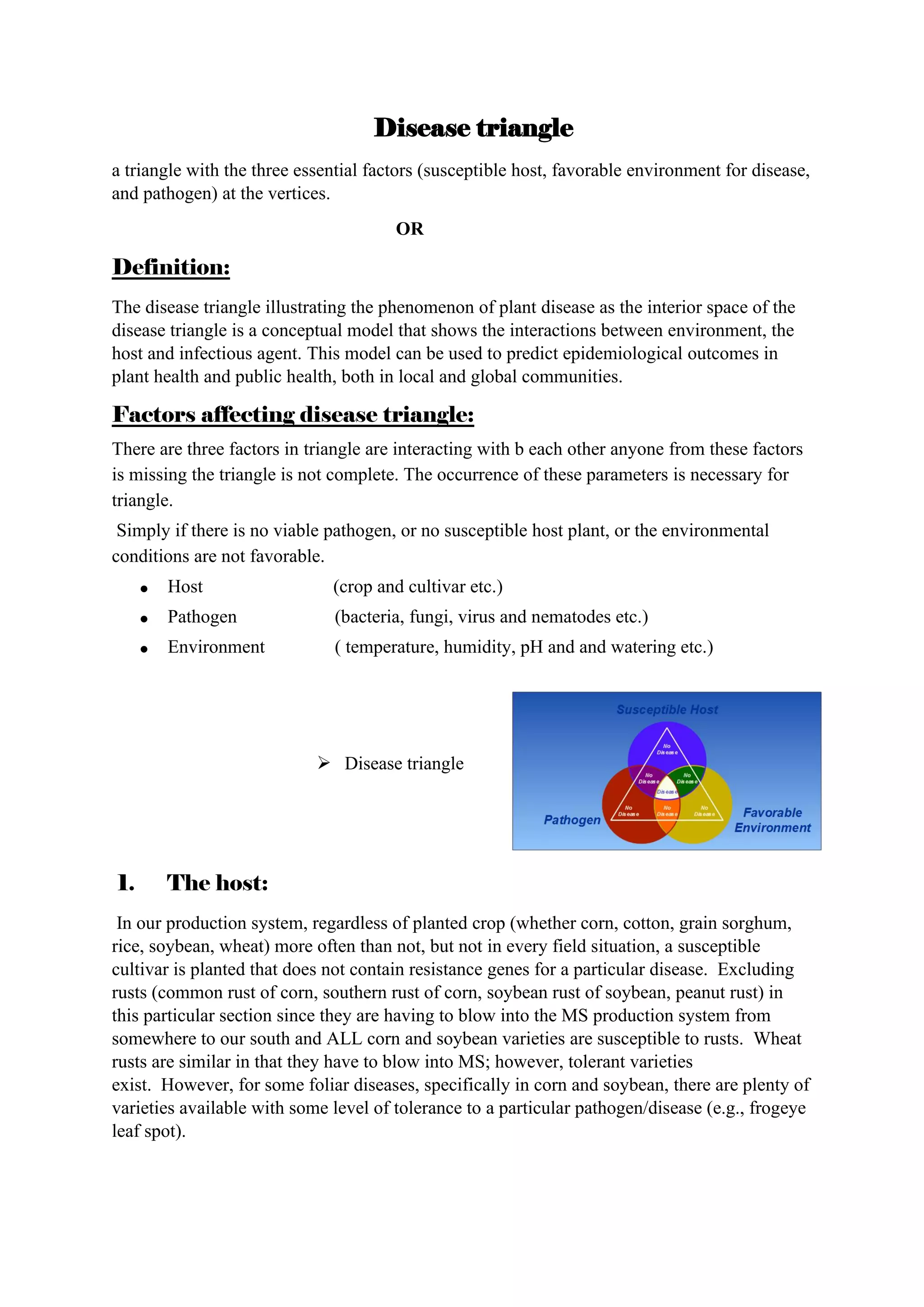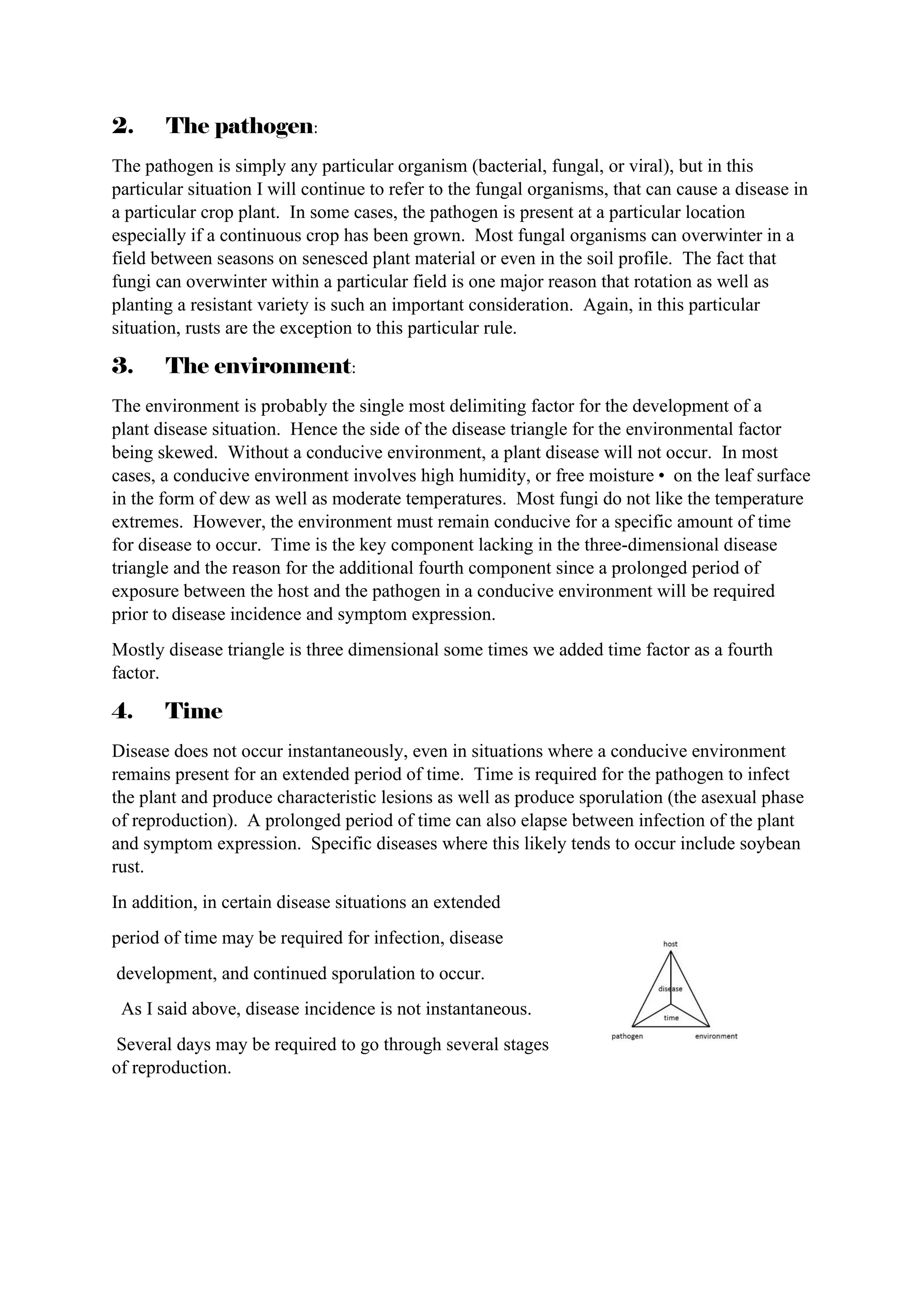The document discusses the disease triangle and disease cycle in plants. The disease triangle illustrates the three factors required for disease: a susceptible host, a pathogen, and a favorable environment. The disease cycle describes the stages a pathogen goes through when infecting a host plant, including inoculation, penetration, infection, invasion, colonization, dissemination, and overwintering/oversummering. It explains each step and how pathogens are able to survive between seasons and continue their life cycles.





